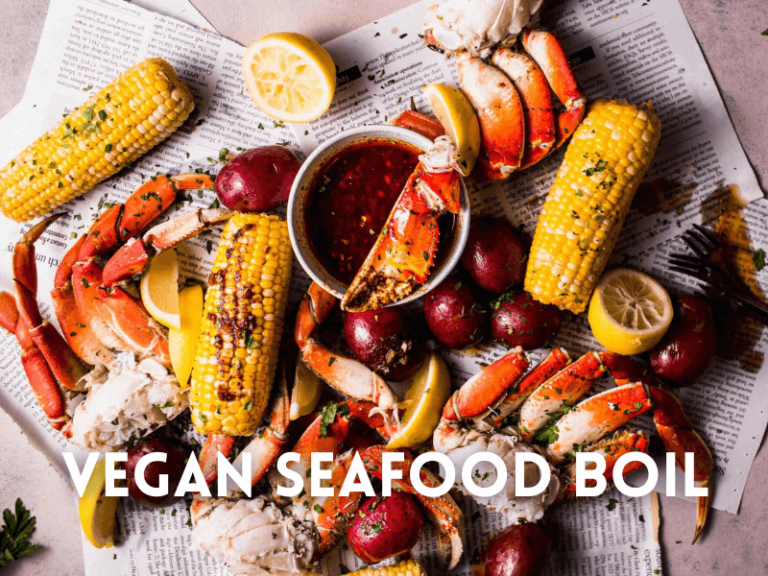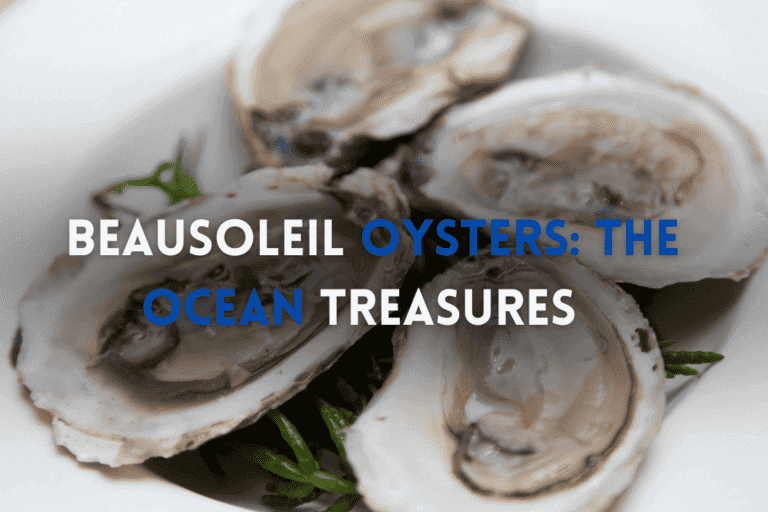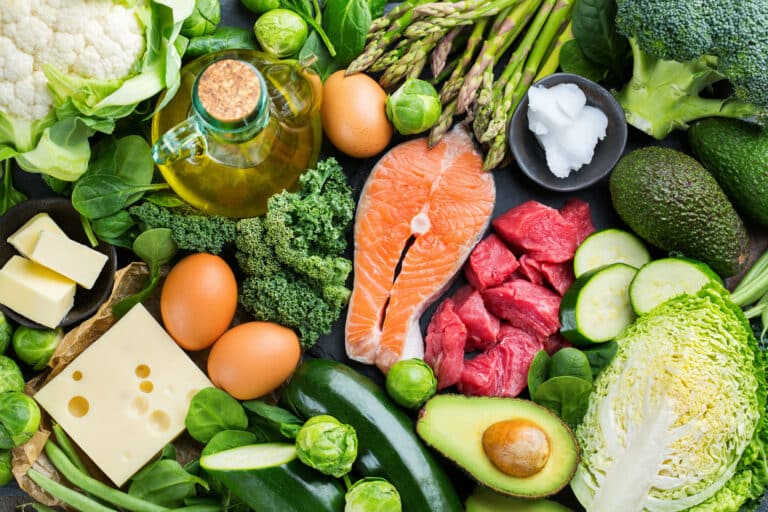Royal Miyagi Oysters: Unveiling the Treasures of the Ocean
Royal Miyagi Oysters are found beneath the salty ocean waves, and they’ve become a favorite among seafood lovers all around the world. These special shellfish have a fascinating history and unique traits, making them important in both the world of cooking and scientific research.
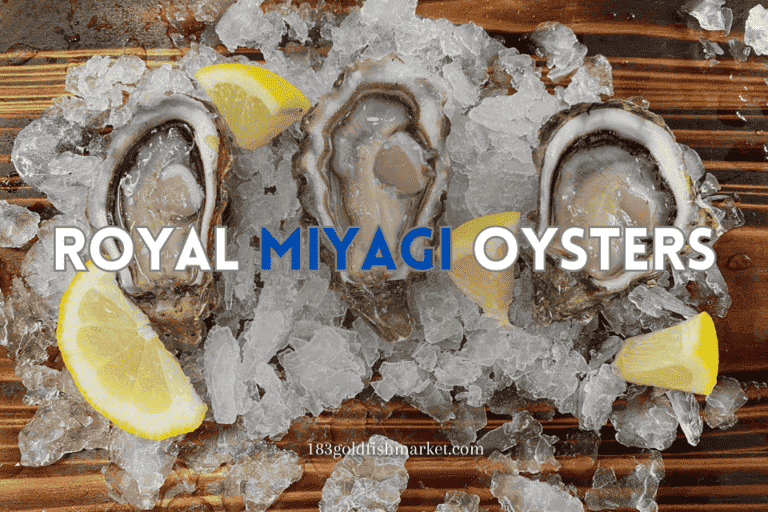
Unveiling the Allure of Royal Miyagi Oysters
Royal Miyagi oysters have captivated peoples taste buds, for generations. Apart from being a delicacy these marine gems hold a historical importance deeply embedded in the traditions of their native cultures. Their enduring legacy goes beyond the enjoyment of food as they offer a glimpse into the past with each narrating tales of heritage and cultural ties. More, than a pleasure Royal Miyagi oysters symbolize tradition and beckon those who relish them to appreciate not just their exquisite flavors but also the ancient stories they carry.
Historical Significance and Cultural Ties
Throughout history, the Royal Miyagi oysters have held a place, in cultures going beyond just being food. They were once used in ceremonies as offerings to gods. Were seen as a symbol of good fortune in folklore. These oysters carry a significance that transcends their taste and texture. Their journey over time has been intertwined with myths making them more than a treat. From customs to stories passed down through generations the Royal Miyagi oysters serve as connections to rich cultural traditions. They not tantalize the taste buds. Also weave narratives that bring history and heritage alive, with each delicious bite.
Origin and Geography
The story of Royal Miyagi oysters unfolds in the picturesque Miyagi Prefecture of Japan. This coastal region provides an ideal habitat for these mollusks, owing to its unique geography and the optimal conditions it offers for their growth and maturation.
1. The Birthplace: Miyagi Prefecture, Japan
Miyagi Prefecture, with its intricate coastline and nutrient-rich waters, provides the perfect cradle for Royal Miyagi oysters. The union of clean currents and coastal geography has bestowed this region with the gift of nurturing these oysters to perfection.
2. Coastal Geography and Optimal Habitat Conditions
The oysters flourish in Miyagi’s coastal ecosystem, where the mingling of fresh and saltwater creates an environment rich in nutrients. This interplay is vital for their survival and the development of their unique flavors.
Life Cycle of Royal Miyagi Oysters
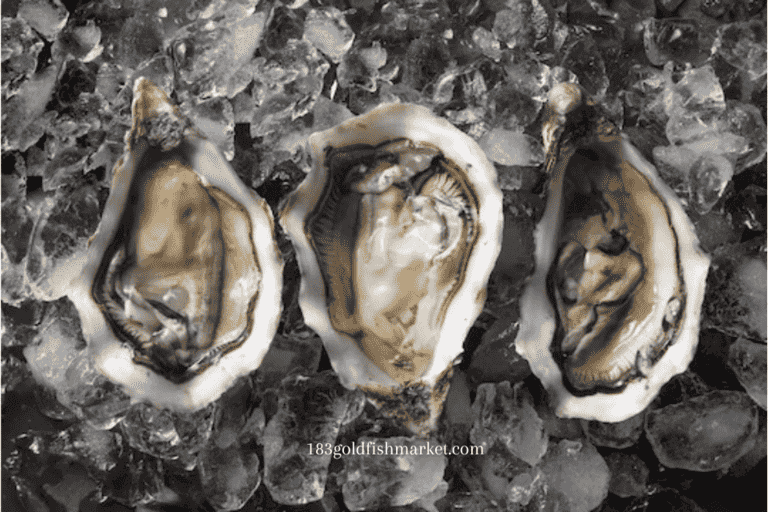
The life cycle of these oysters is a marvel of nature’s precision, encompassing intricate stages that contribute to their ultimate taste and quality.
1. Juvenile Growth Stages
As the larvae develop, they transition into juvenile oysters. During this stage, they settle on surfaces and develop their shells, embarking on a journey towards maturation.
2. Maturation and Harvesting Indicators
Maturation is a gradual process that depends on factors like water temperature, salinity, and nutrient availability. Expert oyster farmers monitor these indicators to determine the perfect time for harvesting.
Distinctive Features of Royal Miyagi
Royal Miyagi oysters stand distinguished by their remarkable features, captivating enthusiasts with a unique blend of size, shape, and appearance. Their size leans towards the medium to large spectrum, creating a substantial and satisfying culinary experience. The shape is distinct, characterized by a well-rounded and uniform shell, presenting a visual harmony. The outer surface, often showcasing intricate patterns and hues, adds an aesthetic dimension. Internally, the plump and succulent meat offers a delectable contrast. Overall, the royal Miyagi oysters boast a harmonious interplay of size, shape, and appearance, creating a visual and gastronomic allure that sets them apart in the world of premium shellfish.
The Flavor Profile of Royal Miyagi Oysters
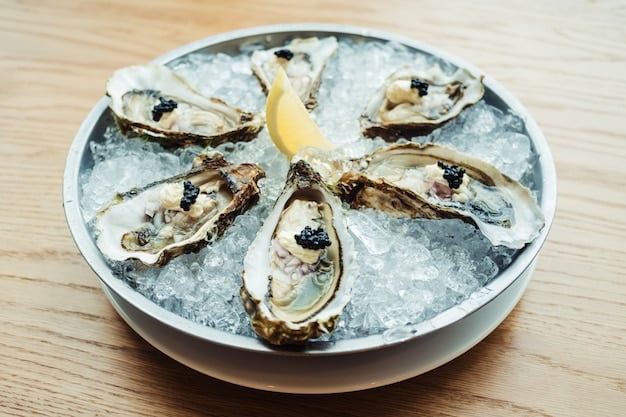
1. Taste Sensation:
Royal Miyagi Oysters are prized for their complex flavor profile, characterized by a briny sweetness with hints of cucumber and melon. Each oyster offers a burst of freshness that lingers on the palate, making them a favorite among seafood connoisseurs.
2. Texture and Appearance:
The texture of Royal Miyagi Oysters is smooth and creamy, with a plump and meaty flesh that delights the senses. Their beautiful appearance, with iridescent shells and glistening meat, adds to the allure of these ocean treasures.
Nutritional Value and Health Benefits
Exploring the nutritional value and health benefits of food reveals a dynamic interplay of essential elements vital for well-being. Beyond mere sustenance, it’s a holistic contribution to one’s health. Laden with nutrients, it fortifies the body, supporting growth, energy, and immune function. These benefits extend beyond the physical, impacting mental well-being, and fostering cognitive function. Antioxidants present contribute to cellular health, combating oxidative stress. A nutrient-rich diet aids in disease prevention, shaping a resilient foundation for overall health. Understanding the symbiotic relationship between food and health underscores the significance of mindful choices, paving the way for a vibrant and nourished life.
Traditional Japanese Cultivation Methods
Woven into Japan’s rich tapestry, oyster farming echoes a legacy handed down through generations, rooted in time-honored traditions. This enduring practice reflects a profound commitment to harmonizing with nature, showcasing a seamless blend of human endeavor and the environment. Passed down through the ages, these traditional methods of oyster cultivation signify more than just a means of sustenance; they embody a cultural ethos deeply connected to the rhythms of the natural world. The delicate dance between human hands and the ocean’s bounty encapsulates a story where history, tradition, and ecological balance converge, shaping a narrative etched in the sands of time.
Sustainable Practices and Environmental Impact
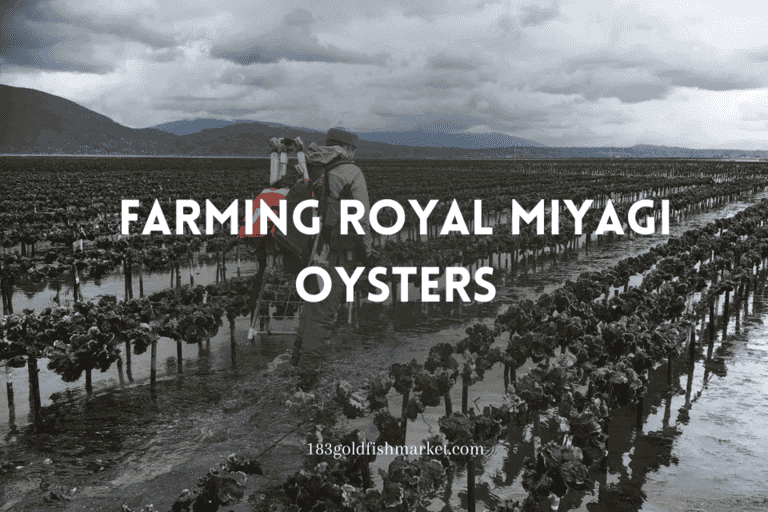
The landscape of oyster farming has undergone a transformative shift, placing sustainability at its core. Innovations include the utilization of recycled materials in crafting oyster beds and the vigilant monitoring of water quality. These practices are not merely a reflection of environmental consciousness but serve as active contributors to fostering a robust and thriving ecosystem. The evolution goes beyond traditional methods, signaling a commitment to balancing the delicate interplay between human cultivation and the natural world. By intertwining eco-friendly practices with the pursuit of a healthier environment, oyster farming emerges not only as a culinary venture but as a stewardship endeavor nurturing the vitality of our aquatic ecosystems.
1. Meticulous Farming Process
Navigating from the collection of spat to the maturation into a full-fledged oyster demands meticulous care and an unwavering focus on detail. This journey is a testament to the dedication involved in producing oysters of the highest quality, tailored for consumption. Every stage in this process becomes a nuanced dance of precision, where the nurturing hands of cultivators guide the oysters towards optimal growth. It’s a narrative of commitment woven into the very fabric of oyster farming, reflecting not just a series of steps, but a thoughtful orchestration of elements that culminate in delivering oysters that stand as paragons of quality and craftsmanship.
2. Spat Collection and Nursery Management
Commencing with spat collection, the initial phase sets the stage for oyster cultivation. Oyster farmers play a pivotal role, overseeing nurseries with precision to create optimal environments for the development of young oysters. This meticulous management ensures the nurturing of spat, marking the foundational steps in the journey from inception to a thriving oyster, reflecting the intricate craftsmanship inherent in the art of oyster farming.
3. Oyster Bed Construction and Maintenance
Crafted to emulate natural conditions, oyster beds are meticulously constructed to provide an environment conducive to the thriving of these shellfish. The careful design goes beyond mere structure; it aspires to mirror the habitats supporting oyster growth in the wild. This deliberate effort extends into regular maintenance, serving as a crucial element in sustaining the flourishing oyster population. Through consistent upkeep, these beds remain a haven where the delicate balance of factors mimics nature, fostering an environment where oysters not only survive but thrive.
4. Monitoring Water Quality for Optimal Growth
Ensuring optimal water quality emerges as pivotal in the realm of oyster farming. The process involves consistent testing and fine-tuning, actively crafting an environment that fosters the ideal conditions for oyster growth. This ongoing commitment is more than precautionary; it’s a deliberate effort to guarantee the finest setting, where regular adjustments act as a proactive measure. By prioritizing water quality, oyster farmers not only safeguard the well-being of their shellfish but actively contribute to creating a thriving habitat that enhances the growth and vitality of the oyster population.
Flavor Influences
The flavors of Royal Miyagi oysters are influenced by a range of factors, from their environment to their diet.
1. Impact of Water Salinity and Temperature
The distinctive flavor of oysters is intricately shaped by the interplay of water salinity and temperature. These key factors, carefully balanced, converge to craft the unique taste that defines each oyster. The delicate equilibrium maintained between salinity and temperature is not merely a natural occurrence but a dynamic dance of elements, showcasing how the environment in which oysters thrive significantly influences the nuanced and individual flavor profiles that make each oyster a gastronomic delight.
2. Diet’s Effect on Oyster Taste
Dining on microorganisms from their surroundings, oysters draw their flavor nuances from this unique diet. The presence of specific microorganisms becomes a defining factor, imbuing the oysters with distinct taste notes. It’s not just about sustenance; the microscopic elements in their environment become the unseen architects, contributing to the varied and nuanced flavors that unfold with each succulent bite, shaping the gastronomic experience that oyster enthusiasts savor and appreciate.
Culinary Uses and Pairings

1. Raw Oyster Experience:
Enjoying Royal Miyagi Oysters raw is a popular choice among food enthusiasts. Served on a bed of ice with a squeeze of lemon or a dash of mignonette sauce, these oysters showcase their natural flavors in all their glory.
2. Cooking Techniques:
While raw consumption is a classic way to enjoy Royal Miyagi Oysters, they also shine when cooked. Grilled, baked, or fried, these versatile oysters add a touch of luxury to any dish. Pair them with champagne or a crisp white wine for a gourmet dining experience.
Oyster Harvesting and Processing
Harvesting Royal Miyagi oysters is an art in itself, involving careful timing and precise techniques to ensure their quality.
1. Harvesting Techniques and Timing
Mastering the art of harvesting demands precision in timing. Oysters, usually handpicked, undergo a meticulous selection process where only the mature ones are chosen by farmers. This delicate and hands-on approach ensures that each harvest captures the peak of maturity, contributing to the quality and excellence of the oyster, making the process not just a task but a nuanced craft refined by experience and expertise.
2. Sorting, Cleaning, and Grading Procedures
Post-harvest, oysters undergo meticulous sorting, cleaning, and grading, guaranteeing that only the finest specimens reach the market. This comprehensive process serves as a quality control measure, meticulously fine-tuning the selection to present oysters of exceptional caliber. Each step, from sorting to grading, reflects a commitment to delivering a premium product, underscoring the dedication and care invested in ensuring that only the best oysters make their way to discerning consumers.
3. Shucking Methods: Tradition vs. Innovation
Shucking, the art of opening oyster shells, is a skill honed by many. While traditional techniques are revered, modern innovations in tools have seamlessly integrated into this craft. The mastery of both traditional and contemporary methods underscores the adaptability within the practice of shucking, showcasing a dynamic blend where time-honored expertise meets the efficiency and precision afforded by innovative tools.

Pearls of Miyagi Waters
Beyond their succulent meat, Royal Miyagi oysters occasionally reveal another treasure—the creation of pearls.
1. The Rare Occurrence of Natural Pearls
Natural pearls are a rare find within oyster shells. The scarcity of these oceanic gems not only enhances their allure but also intensifies the fascination that surrounds them. Each natural pearl becomes a testament to the mystique of the sea, adding an element of rarity and intrigue that elevates these treasures found within oyster shells to a status of extraordinary fascination.
2. Cultured Pearl Production: A Delicate Process
Crafting cultured pearls involves precise human intervention, demanding meticulous care. The method includes delicately inserting a nucleus into the oyster, initiating the intricate process of pearl formation. This hands-on approach signifies a fusion of nature and craftsmanship, where human ingenuity collaborates with the oyster’s natural tendencies to produce pearls that reflect both the artistry of cultivation and the inherent beauty of the oyster’s response to this intentional stimulation.
Economic and Cultural Significance
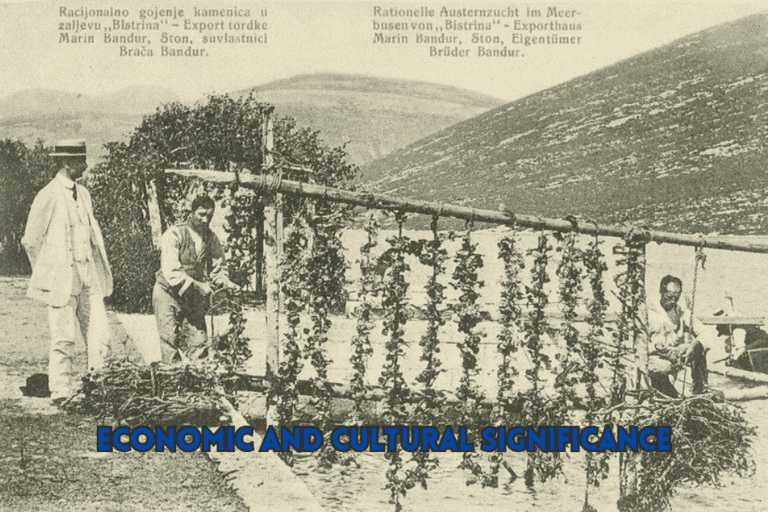
The importance of Royal Miyagi oysters extends beyond their taste; they have a significant impact on the local economy and cultural traditions.
1. Contributions to Local Economy and Livelihoods
Oyster farming is a cornerstone for coastal communities, offering livelihoods and fostering economic vitality. Beyond sustaining employment, it plays a pivotal role in boosting tourism and propelling overall economic growth. The industry’s multifaceted impact underscores its significance, not just as a source of sustenance but as a driving force behind community resilience, drawing attention to the intricate link between oyster farming, local livelihoods, and the broader economic landscape of coastal regions.
2. Role in Japanese Festivals and Traditions
In Japanese festivals, these oysters take center stage, not just as a culinary delight but as symbols of cultural significance. The festivities invite people to relish the distinctive flavors, creating a sensory experience that transcends taste alone. Through these celebrations, the oysters become more than a dish; they embody a cultural tradition, inviting individuals to partake in a gastronomic journey that intertwines with the rich tapestry of Japanese heritage, offering a unique and flavorful glimpse into the heart of the festivities.

Miyagi Oysters in Scientific Research
Beyond their culinary and economic significance, Royal Miyagi oysters play a pivotal role in scientific research.
1. Studying Environmental Indicators Through Oysters
Oysters serve as environmental indicators, offering a glimpse into the well-being of the ecosystems they call home. Their presence is not just a testament to their habitat but also a revealing insight into water quality. Like nature’s sentinels, these shellfish convey a silent narrative, reflecting the health of the surrounding environment and standing as crucial barometers that echo the delicate balance of ecosystems through the lens of their own thriving or challenges.
2. Bioremediation Capabilities and Ecological Contributions
Harnessing bioremediation capabilities, oysters play a vital role in water purification by effectively filtering out pollutants. This ecological service underscores their profound importance in maintaining the health of aquatic environments. Beyond their culinary and cultural significance, oysters emerge as nature’s custodians, contributing actively to the well-being of ecosystems by mitigating environmental stressors and embodying a symbiotic relationship with the waters they inhabit.

Royal Miyagi Oyster Festivals
Festivals dedicated to these oysters showcase their flavors, cultural importance, and the spirit of the communities that harvest them.
1. Showcasing Local Cuisine and Culture
Oyster festivals are vibrant celebrations intertwining local cuisine and culture, shining a spotlight on the pivotal role these shellfish play in the community. Beyond being a culinary delight, these festivals become lively reflections of tradition and community spirit. They offer a platform where the essence of local culture and the gastronomic significance of oysters converge, inviting individuals to savor not just a dish but a cultural experience that encapsulates the heart and heritage of the community.
2. Festive Events and Tourist Attractions
Transforming into tourist magnets, these festivals beckon visitors from diverse corners to immerse themselves in the joyous atmosphere of oyster celebrations. Beyond the gastronomic allure, these events evolve into cultural spectacles, offering a unique experience that transcends borders. The festivals become more than a local affair; they morph into dynamic celebrations that bridge cultures, uniting individuals in the shared delight of savoring oysters and partaking in the festive ambiance.

Future of Royal Miyagi Oysters
As we look ahead, the future of Royal Miyagi oysters is a blend of innovation, adaptability, and sustainability.
1. Innovations in Aquaculture and Breeding
Advancements in aquaculture technology and breeding techniques are poised to shape the industry’s future, ensuring a consistent supply of these delicacies.
2. Adapting to Changing Environmental Conditions
Climate change presents challenges, but also opportunities for innovation. Oyster farming may evolve to thrive in changing conditions.
Conclusion
In conclusion, Royal Miyagi Oysters stand as a testament to the harmony between nature and culinary craftsmanship. With their exquisite flavor, sustainable practices, and commitment to conservation, these ocean treasures offer a truly unique dining experience. Next time you savor a Royal Miyagi Oyster, remember the beauty of the ocean that nurtured it and the dedication of those who tend to its cultivation.
FAQs about Royal Miyagi Oysters
Q1: What makes Royal Miyagi oysters unique in flavor?
A: Their distinctive flavor comes from the interplay of briny, sweet, and umami notes, influenced by their habitat and diet.
Q2: How do aquaculture practices contribute to sustainability?
A: Modern aquaculture techniques focus on minimizing environmental impact, promoting healthier ecosystems, and ensuring a steady oyster supply.
Q3: Can Royal Miyagi oysters be enjoyed by individuals with shellfish allergies?
A: Individuals with shellfish allergies should exercise caution, as oysters can trigger allergic reactions. Consultation with a medical professional is advisable.
Q4: What is the significance of the annual Oyster Festival in Miyagi?
A: The Oyster Festival is a celebration of local culture, cuisine, and the oyster industry’s contributions to the community and economy.
Q5: How are Royal Miyagi oysters contributing to marine research?
A: Oysters act as indicators of water quality and contribute to understanding ecosystem health. They also possess bioremediation capabilities, aiding in purifying water.
The story of Royal Miyagi oysters is a tale of oceanic treasures, cultural significance, and gastronomic delights. These mollusks, nurtured by tradition and innovation, continue to enrich our lives with their unique flavors and contributions to science and culture.
